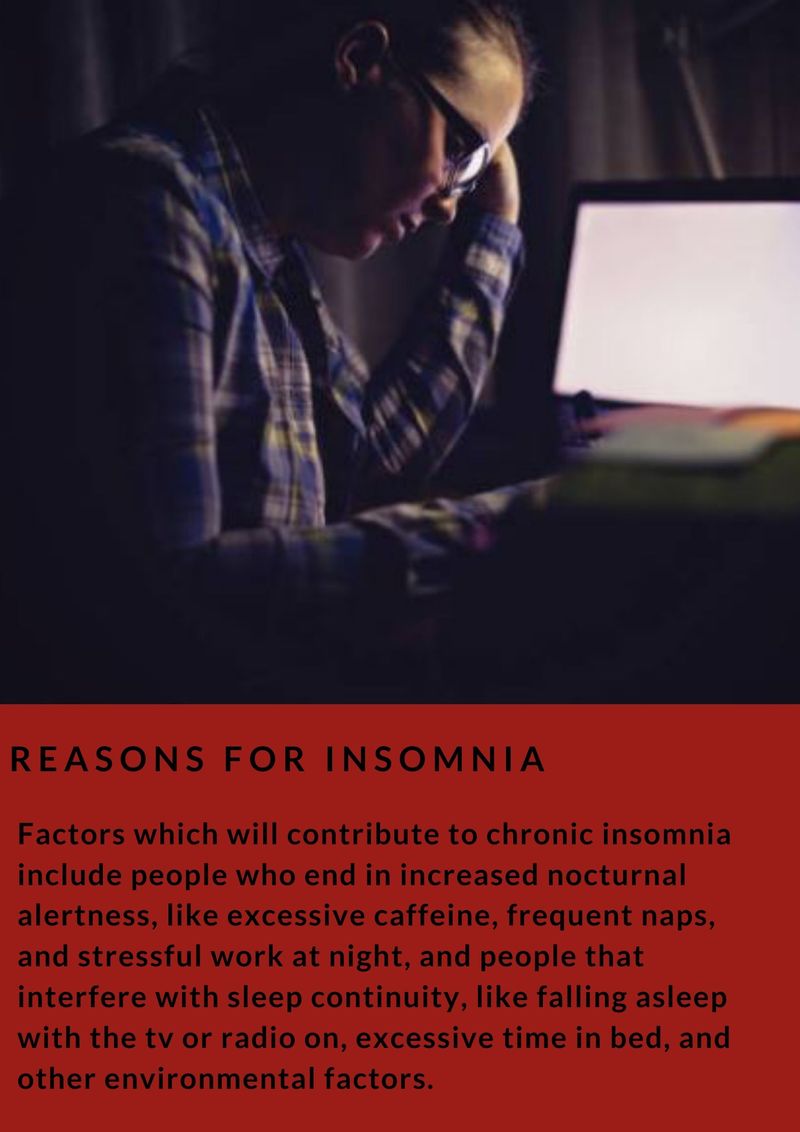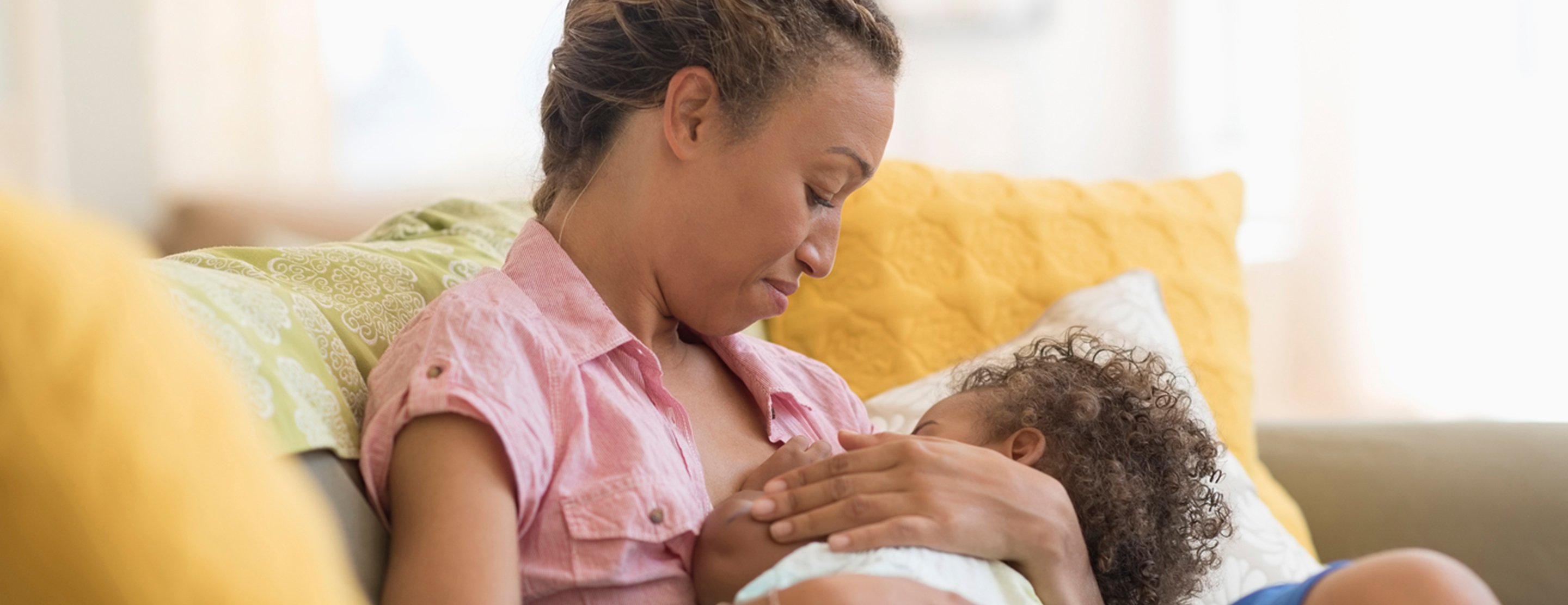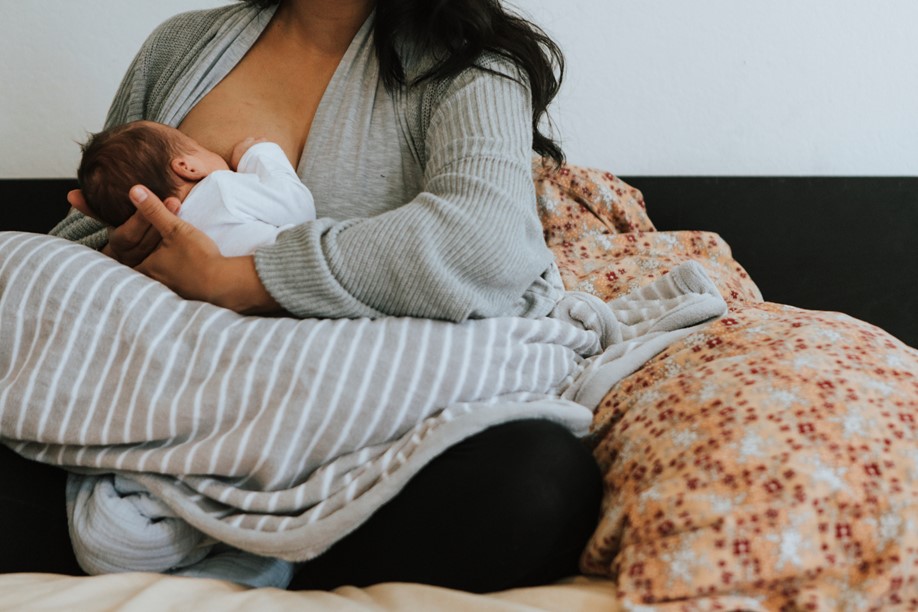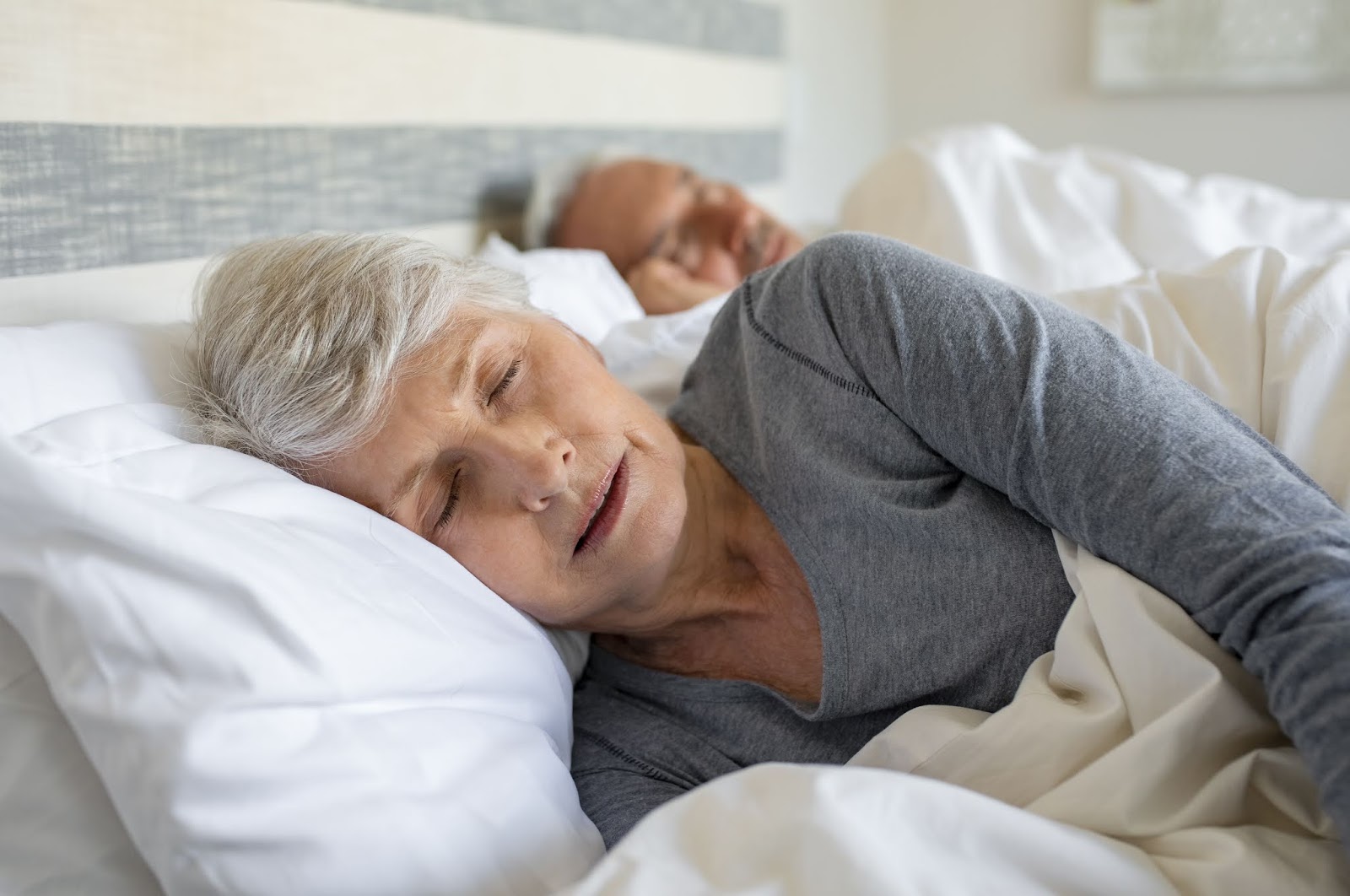Co-sleeping, or the practice of sleeping in the same bed as your baby, has been a controversial topic among parents for years. While some argue that it promotes bonding and makes nighttime feedings easier, others believe it poses serious safety risks for infants. So, what are the true benefits and risks of co-sleeping with your baby? First, let's talk about the benefits. Co-sleeping can indeed promote a stronger bond between parent and child. Being in close proximity to your baby can help you respond more quickly to their needs, such as comforting them when they wake up crying. It can also make nighttime breastfeeding easier, as you don't have to get up and go to a separate room to nurse. However, co-sleeping also comes with its fair share of risks. The biggest concern is the risk of suffocation or Sudden Infant Death Syndrome (SIDS). This risk is especially high if the baby is sleeping on a soft surface, such as a fluffy comforter or pillow. In fact, the American Academy of Pediatrics recommends that infants should always sleep on a firm surface, such as a crib mattress, for the first year of life.1. The Benefits and Risks of Co-Sleeping with Your Baby
If you do choose to co-sleep with your baby, there are some important safety guidelines to follow. First and foremost, make sure your baby is sleeping on a firm mattress with a tight-fitting sheet. Avoid using any pillows, blankets, or other loose bedding in the bed. It's also important to ensure that your baby cannot roll off the bed or become trapped between the mattress and the wall. It's also important to note that co-sleeping is not safe for all infants. Premature or low birth weight babies, as well as those with respiratory problems, should not co-sleep as they are at a higher risk for SIDS. Additionally, if you or your partner are smokers, have been drinking alcohol, or have taken any sleep-inducing medications, do not co-sleep with your baby.2. Safe Co-Sleeping Practices for Infants
When it comes to selecting a mattress for co-sleeping, the key is to choose one that is firm and supportive. Look for a mattress that is specifically designed for infants, as these are often made with firmer materials and have passed safety regulations. Make sure the mattress fits snugly in the bed frame and that there are no gaps or spaces for your baby to become trapped in. If you already have a soft mattress, consider adding a firm topper or purchasing a separate firm mattress for your baby to sleep on. It's also important to regularly check the mattress for any signs of wear and tear, such as sagging or lumps, that could create an unsafe sleeping surface.3. Choosing a Safe Mattress for Co-Sleeping
For new parents, co-sleeping can be a daunting concept. However, by following some important safety guidelines, you can ensure a safe sleeping environment for your baby. First, make sure the bed is free of any loose items that could potentially suffocate your baby, such as pillows, blankets, or stuffed animals. Next, position yourselves in a way that keeps your baby between you and not on the edge of the bed. And always remember to never leave your baby unattended on the bed, especially if they are able to roll over on their own. Additionally, it's important to keep the room at a comfortable temperature for your baby. A room that is too hot can increase the risk of SIDS. It's also recommended to use a sleep sack or wearable blanket for your baby instead of loose blankets, as this reduces the risk of suffocation.4. Co-Sleeping Safety Guidelines for New Parents
As mentioned earlier, co-sleeping on a soft mattress can be extremely dangerous for infants. The soft surface can increase the risk of suffocation, as babies do not have the strength to lift their heads if their faces become buried in the mattress or bedding. In fact, studies have shown that the risk of suffocation is 20 times higher in a bed with multiple sleepers compared to a crib. It's also important to note that soft mattresses can increase the risk of SIDS. The soft surface can potentially restrict a baby's breathing, especially if they are sleeping on their stomach or side. This is why it's important to always use a firm mattress for co-sleeping.5. The Dangers of Co-Sleeping on a Soft Mattress
Creating a safe co-sleeping environment is crucial for the health and well-being of your baby. Start by ensuring that the room is dark, quiet, and free of distractions. This will help your baby sleep more soundly and reduce the risk of waking up during the night. It's also important to make sure the room is well-ventilated to prevent overheating. Next, make sure the bed is positioned away from any potential hazards, such as curtains or cords. Keep all furniture, including dressers and nightstands, away from the bed to prevent your baby from pulling them over. And finally, avoid using any sleep aids, such as pillows or stuffed animals, in the bed with your baby.6. How to Create a Safe Co-Sleeping Environment
We cannot stress enough the importance of using a firm mattress for co-sleeping. Not only does it reduce the risk of suffocation and SIDS, but it also provides proper support for your baby's developing body. A firm mattress helps to keep your baby in a safe sleeping position and reduces the risk of them rolling onto their stomach, which can increase the risk of SIDS. If you are unsure about the firmness of your mattress, you can perform a simple test. Press your hand into the mattress. If it bounces back immediately, it is likely firm enough for co-sleeping. If it sinks in and takes a few seconds to bounce back, it's probably too soft for your baby to sleep on.7. The Importance of Firm Mattresses for Co-Sleeping
For breastfeeding mothers, co-sleeping can be a convenient option for nighttime feedings. However, it's important to follow some safety tips to ensure the well-being of your baby. First, make sure the bed is positioned in a way that allows you to easily reach your baby without leaning over them. This can help prevent accidentally smothering your baby with your body or blankets. It's also recommended to keep the bed free of any pillows or blankets that could potentially cover your baby's face. If you are feeling drowsy while nursing, it's best to move your baby back to their own safe sleeping space before falling asleep. This reduces the risk of accidental suffocation or SIDS.8. Co-Sleeping Safety Tips for Breastfeeding Mothers
As your child grows older, co-sleeping can become more dangerous. Toddlers and young children are at a higher risk of suffocation due to their increased mobility and ability to move around in their sleep. Additionally, as children get older, the risk of them accidentally rolling off the bed also increases. For these reasons, it's important to transition your child to their own bed by the age of two. If your child does still sleep in your bed, it's important to follow all of the co-sleeping safety guidelines mentioned previously. It's also recommended to have a separate sleeping space for your child, such as a toddler bed or a crib attached to your bed, to reduce the risk of injury or suffocation.9. The Risks of Co-Sleeping with Older Children
The safest position for co-sleeping with your baby is on their back. This reduces the risk of suffocation and SIDS. However, it's also important to make sure your baby's head and face are not covered by blankets or pillows, and that they are positioned in a way that allows for proper breathing. Avoid co-sleeping on a waterbed, couch, or recliner as these surfaces can increase the risk of suffocation. In conclusion, while co-sleeping can have its benefits, it's important to prioritize safety for your baby. Always follow the recommended safety guidelines and choose a firm mattress for co-sleeping. With proper precautions and a safe sleeping environment, you can enjoy the bonding experience of co-sleeping with your baby while keeping them safe and sound. 10. Safe Sleeping Positions for Co-Sleeping with Your Baby
The Importance of Choosing the Right Co-Sleeping Mattress For Your Baby

Ensuring Safety and Comfort
 When it comes to new parents, safety and comfort are two of the most important factors to consider when designing a
co-sleeping arrangement
for their baby. While there are many different options for
co-sleeping mattresses
on the market, not all of them are created equal in terms of safety. It is crucial for parents to carefully research and select the right co-sleeping mattress to ensure their baby’s safety and comfort while sleeping.
When it comes to new parents, safety and comfort are two of the most important factors to consider when designing a
co-sleeping arrangement
for their baby. While there are many different options for
co-sleeping mattresses
on the market, not all of them are created equal in terms of safety. It is crucial for parents to carefully research and select the right co-sleeping mattress to ensure their baby’s safety and comfort while sleeping.
The Dangers of Using the Wrong Mattress
 Using the wrong
co-sleeping mattress
can pose serious risks to your baby’s safety. Mattresses that are too soft or too firm can increase the risk of suffocation or Sudden Infant Death Syndrome (SIDS). A
firm, flat surface
is recommended for co-sleeping to prevent the baby from sinking into the mattress and potentially suffocating. Additionally, mattresses with gaps or spaces between them and the bed frame can also pose a risk of entrapment for the baby.
Using the wrong
co-sleeping mattress
can pose serious risks to your baby’s safety. Mattresses that are too soft or too firm can increase the risk of suffocation or Sudden Infant Death Syndrome (SIDS). A
firm, flat surface
is recommended for co-sleeping to prevent the baby from sinking into the mattress and potentially suffocating. Additionally, mattresses with gaps or spaces between them and the bed frame can also pose a risk of entrapment for the baby.
Choosing the Right Mattress
 When shopping for a
co-sleeping mattress
, there are a few important factors to keep in mind. Look for a mattress that is specifically designed for co-sleeping, as they are typically made with safe and breathable materials. It is also important to choose a
firm and flat
mattress, as mentioned earlier, to ensure the baby’s safety. Additionally, consider the size and fit of the mattress in relation to your bed frame to avoid any gaps or spaces that could pose a risk.
When shopping for a
co-sleeping mattress
, there are a few important factors to keep in mind. Look for a mattress that is specifically designed for co-sleeping, as they are typically made with safe and breathable materials. It is also important to choose a
firm and flat
mattress, as mentioned earlier, to ensure the baby’s safety. Additionally, consider the size and fit of the mattress in relation to your bed frame to avoid any gaps or spaces that could pose a risk.
Other Safety Precautions
 In addition to choosing the right co-sleeping mattress, there are other safety precautions that parents should take to ensure a safe sleeping environment for their baby. It is recommended to use a
co-sleeping bassinet
that attaches securely to the bed, rather than having the baby sleep directly on the mattress. This can help prevent any accidental rolling or movement that could potentially harm the baby. It is also important to always place the baby on their back to sleep and avoid placing any soft objects or loose bedding in the co-sleeping area.
In addition to choosing the right co-sleeping mattress, there are other safety precautions that parents should take to ensure a safe sleeping environment for their baby. It is recommended to use a
co-sleeping bassinet
that attaches securely to the bed, rather than having the baby sleep directly on the mattress. This can help prevent any accidental rolling or movement that could potentially harm the baby. It is also important to always place the baby on their back to sleep and avoid placing any soft objects or loose bedding in the co-sleeping area.
In Conclusion
 In conclusion, choosing the right co-sleeping mattress for your baby is crucial for their safety and comfort. Parents should carefully research and select a firm and flat mattress specifically designed for co-sleeping. It is also important to follow other safety precautions, such as using a co-sleeping bassinet and placing the baby on their back to sleep. By taking these measures, parents can ensure a safe and peaceful sleep for their little one.
In conclusion, choosing the right co-sleeping mattress for your baby is crucial for their safety and comfort. Parents should carefully research and select a firm and flat mattress specifically designed for co-sleeping. It is also important to follow other safety precautions, such as using a co-sleeping bassinet and placing the baby on their back to sleep. By taking these measures, parents can ensure a safe and peaceful sleep for their little one.





































































/https:%2F%2Fspecials-images.forbesimg.com%2Fimageserve%2F604eb434a2e9ec085241165f%2F0x0.jpg%3FcropX1%3D0%26cropX2%3D850%26cropY1%3D88%26cropY2%3D567)



































